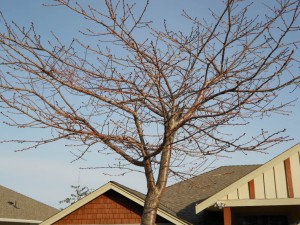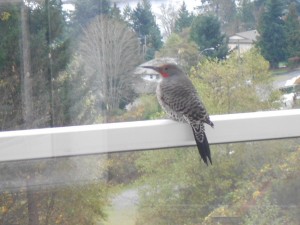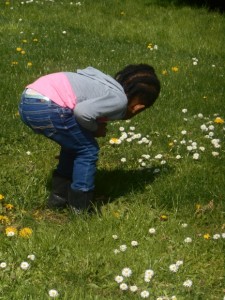Did you happen to notice the Google Doodle of Emmy Noether, a mathematician? Some of her work is based on nature’s patterns, so let’s take a math nature walk.
 Spring is an ideal time to look for patterns in nature. Trees do not yet have their leaves so it’s easier to see how the trunk of a tree is much bigger than the branches. Near the bottom of the tree branches are thick, but as the branches divide they get smaller and smaller. That’s a pattern.
Spring is an ideal time to look for patterns in nature. Trees do not yet have their leaves so it’s easier to see how the trunk of a tree is much bigger than the branches. Near the bottom of the tree branches are thick, but as the branches divide they get smaller and smaller. That’s a pattern.
Are there any pine cones on the ground? The sections start big and get smaller closer to the top too. You might be able to see the spiral pattern in the cone. Animals and bugs wear patterns. Waves and ripples make them.
 There are many shapes in nature. Flowers are often like circles. Trees look like an upside down triangle. Beaks are a very pointy triangle. Corners are hard to find in nature.
There are many shapes in nature. Flowers are often like circles. Trees look like an upside down triangle. Beaks are a very pointy triangle. Corners are hard to find in nature.
Some plants will have new leaves and we can show kids how one side of the leaf looks like the other side. The two halves of the shape are symmetrical. What shapes are the clouds?
 On a nature math walk, we can also count. There might be a few flowers in a patch. Together, we can count them. If the flowers are different colors, we can see if there are more of one color than the others. Bigger/smaller and more/fewer are math concepts that kids can explore on a nature walk. Are there more flowers or more rocks? What rock is the biggest?
On a nature math walk, we can also count. There might be a few flowers in a patch. Together, we can count them. If the flowers are different colors, we can see if there are more of one color than the others. Bigger/smaller and more/fewer are math concepts that kids can explore on a nature walk. Are there more flowers or more rocks? What rock is the biggest?
Kids need lots of experiences of all different kinds as they learn. Sometimes, adults and children in higher grades ask why they have to learn so much math. Even worse, math anxiety and math phobia can affect one out of every 4 people, that’s 25%. Going for a nature walk in the spring and finding ways to discover and use math helps kids develop the idea that math is a natural part of the world. That’s an intentional play on words and kids need to play with math too. What other math can kids find on a spring nature walk?
